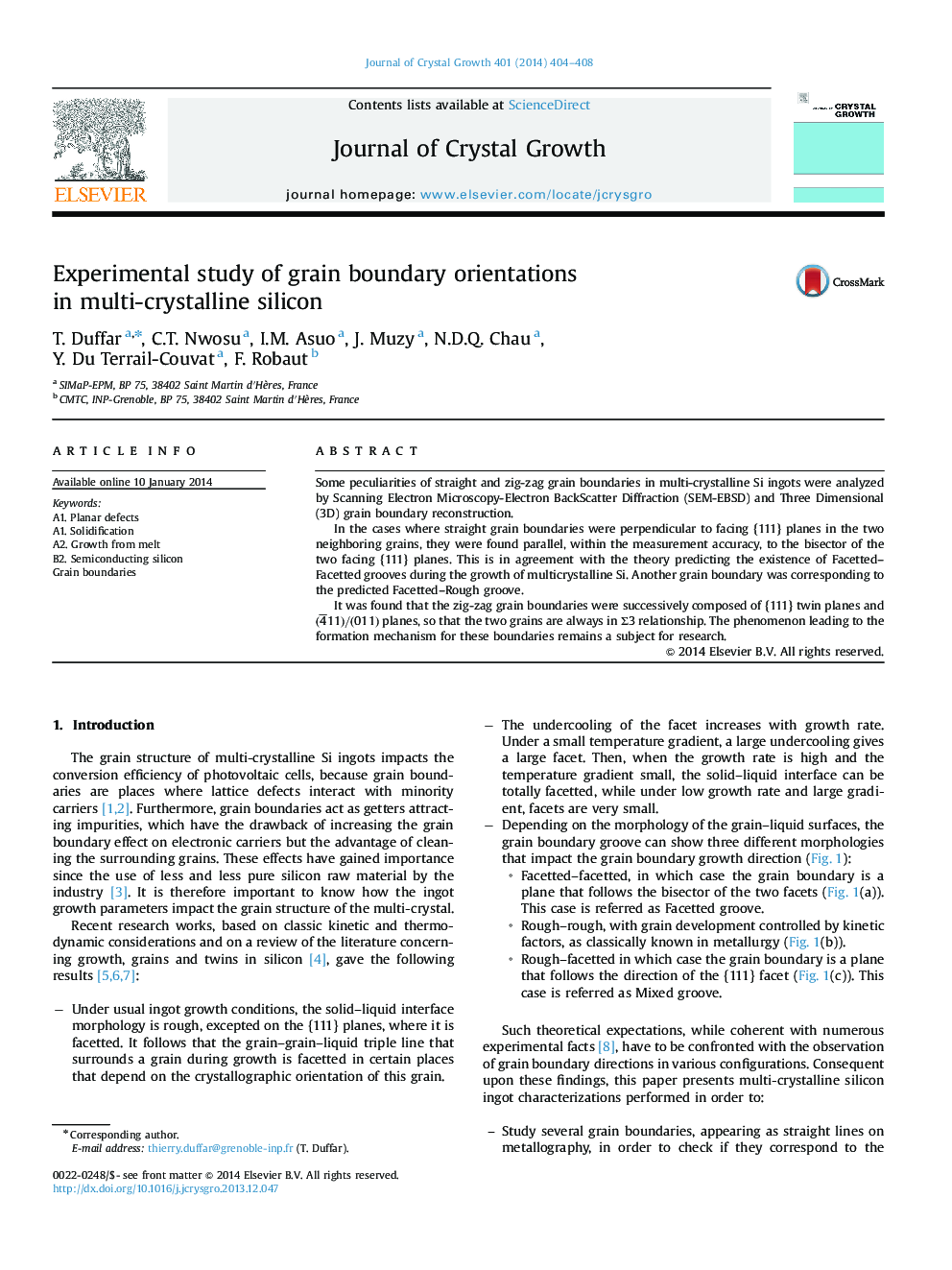| Article ID | Journal | Published Year | Pages | File Type |
|---|---|---|---|---|
| 1790374 | Journal of Crystal Growth | 2014 | 5 Pages |
•An original experimental method, based on both SEM-EBSD and 3D grain boundary reconstruction, has been developed for grain boundary analysis in multicrystalline silicon.•In the case where a Facetted–Facetted groove was likely to exist during growth, it was found that the grain boundary follows the bisector of the two facets.•A grain boundary consistent with the existence of a Facetted–Rough groove has also been observed.•These observations are in agreement with recent theory of grain development in Si ingots.•Zig-zag grain boundaries were found to be a particular cases of twin boundaries.
Some peculiarities of straight and zig-zag grain boundaries in multi-crystalline Si ingots were analyzed by Scanning Electron Microscopy-Electron BackScatter Diffraction (SEM-EBSD) and Three Dimensional (3D) grain boundary reconstruction.In the cases where straight grain boundaries were perpendicular to facing {111} planes in the two neighboring grains, they were found parallel, within the measurement accuracy, to the bisector of the two facing {111} planes. This is in agreement with the theory predicting the existence of Facetted–Facetted grooves during the growth of multicrystalline Si. Another grain boundary was corresponding to the predicted Facetted–Rough groove.It was found that the zig-zag grain boundaries were successively composed of {111} twin planes and (4¯11)/(011) planes, so that the two grains are always in Σ3 relationship. The phenomenon leading to the formation mechanism for these boundaries remains a subject for research.
